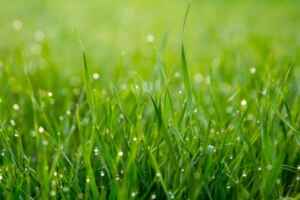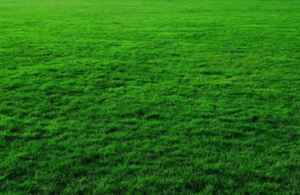The Fastest Growing Grass Is…
You may be wondering what type of grass grows the fastest because you are planning on planting some or perhaps you want to know which is the most eco-friendly. And like me, you are also interested in knowing which is the easiest to maintain. Well, you’ve come to the right place! In this article, I will cover all of these things and more.
But first, let’s start with the first and most basic question, what type of grass grows the fastest?
The first and most efficient type of grass is Bermuda grass. It can grow as fast as 3 inches a day which gives you a lot more to work with when it comes time to mow. Another fast-growing grass is Ryegrass. Ryegrass also grows around 3 inches a day and is extremely lush and full, making it great for lawns that need to be impressive in size.
Another species of grass that you might want to consider using is Zoysia Grass. It grows between 2 1/2 – 3 inches per day and requires very little mowing and fertilizing.
Now that I’ve covered some of the more popular types of grass that grow quickly, let’s talk about the process of planting and caring for each of these. I will also share some good tips for making sure your lawn looks great year-round no matter what kind of grass you have!
 How To Know If Bermuda Grass Is Right For You
How To Know If Bermuda Grass Is Right For You
First, I want to talk about Bermuda grass because you must know how to maintain this type of grass before you decide to install it. One thing that makes Bermuda grass so easy to take care of is that it requires very little mowing.
Bermuda grass can grow in most climates except those that are extremely cold or extremely hot. It requires a bit more shade than other types of grass, so if you live in an area that gets a lot of sunlight, you may want to consider covering your lawn with trees and plants.
Simply put, Bermuda grass is a versatile type of grass that requires very little maintenance and yet grows plentifully and quickly once it becomes established in an area.
Planting Bermuda Grass
Now that you know some of the pros of Bermuda grass, it’s time to find out how to plant this type of grass.
- The first thing you will want to do is make sure your soil is nice and loose. If your yard does not have any topsoil, either get some from elsewhere or use compost!
- You will also need to put down some fertilizer that is rich in iron. This will give your lawn green color.
- The last thing you need to do is lay out the Bermuda grass seed according to the package directions, and then water it every day until it has become established.
As long as you take the time and care to plant the Bermuda grass correctly, it will grow quickly and stay healthy for years to come.
How To Know If Ryegrass Is Right For You
Ryegrass is a great choice if you are interested in having a lawn that is lush and green all year round. As long as your yard gets plenty of sunlight, ryegrass will grow quickly and easily for you.
Before going into the same planting process mentioned above, you should know that Ryegrass requires a bit more maintenance. To ensure that your lawn does not become overgrown with weeds, you must fertilize it once a month during spring and summer. You will also want to keep up with weeding. Ryegrass does not grow in heavily shaded areas and it needs to be watered a few times a week.
Planting Ryegrass
Ryegrass is very easy to plant because it’s only necessary to lay the grass on top of the soil. At first, you will notice that your lawn has a very patchy appearance, but gradually the ryegrass will grow in and cover it.
Bare patches can be more easily filled in by fertilizing or overseeding them with some extra ryegrass seed. If you follow these tips, you will be looking at a thick, green lawn of ryegrass before you know it!
Because Ryegrass grows very quickly, I would recommend you do the following:
- After preparing your soil as mentioned above, scatter the grass seed throughout by hand, rather than using a lawn spreader.
- Using a lawn spreader can end up causing bare spots, which will not do you any good at all.
- Water the area you planted very well and make sure to keep it moist throughout the entire growing process! This ensures that your ryegrass grows quickly and looks healthy.
- As for fertilizing, I would recommend doing it just once a year.
If you follow these steps and keep up with the weeding and watering your lawn, you will never have to worry about having a beautiful green lawn again!
 How To Know If Zoysia Grass Is Right For You
How To Know If Zoysia Grass Is Right For You
I would recommend Zoysia grass to people who are looking for a type of grass that is easy to maintain but still looks bright green and plush. Keep in mind that Zoysia prefers to grow in tropical climates, so if you live somewhere where it gets cold in the winter or you receive a lot of snow, this type of grass may not be for you.
Other than it being cold-intolerant, this type of grass is extremely hardy and can grow in just about any type of soil with a pH that is between 5.5 and 8. Unlike Bermuda grass, which has a lot of shallow roots, or Ryegrass, which does not have any roots at all, Zoysia has a deep root system that makes it difficult for weeds to grow. Zoysia grass is also drought-resistant and does not need much water to survive.
Planting Zoysia Grass
Zoysia grass is very easy to plant yourself. Follow these steps for best results:
- First, make sure your soil drains well since this type of grass does not do well in wet areas.
- Also, make sure that your soil has plenty of organic material in it. If it does not, I would recommend adding some topsoil or compost to get the best results.
- After preparing your soil as mentioned above, lay out the seeds in a straight line approximately 2-3 inches apart.
- Once you have laid the seeds down, rake them into the soil using a metal lawn rake to ensure that they are completely covered by earth.
- After raking over the area where you planted with a metal lawn rake, water it well until your soil is moist and there are no dry patches of dirt left.
- As for fertilizing, I would recommend doing it just once a year.
Why Choose A Fast-Growing Grass?
I would recommend choosing a fast-growing grass over an average-growing one for people who are very busy and do not have much time to care for their lawns. Also, if you have children that play on your lawn or pets that spend most of the day running around outdoors, then I would choose this type of grass because it tends to be harder and more durable.
Also, choosing one of these faster-growing grasses tends to be more cost-effective and uses less water. This is because it takes less time to establish itself in your lawn than other types. And since these grasses grow thicker, they do not require as much seed. The one downside is that these grasses require more sunlight and weeding.
How To Keep Your Grass Weed-Free?
- Weeds can spread quickly, taking nutrients and sunlight from the grass, which makes it more difficult for them to grow successfully. Here are the best ways to keep your grass weed-free:
- Black plastic sheeting is the most effective way to prevent weeds from growing near your new grass because it heats the environment around it, which will kill any seeds that are trying to grow nearby. Once the black plastic completely breaks down, you can remove it safely.
- A weed barrier is also another great option because it allows for water and air to reach the grass underneath. Also, even though this barrier will not prevent weeds, it will make it easier to pull them up when they do appear. Once this barrier starts to break down, I would recommend replacing it with a fresh weed barrier.
- Regularly weeding or using a weed killer/grass feeder that kills only the weeds and not your grass is a good way to keep them under control as well, but it can take up a considerable amount of time. If possible, I would recommend weeding by hand because this process requires less maintenance and you will be able to get rid of any weed that appears with ease.
 How Often Should I Fertilize My Grass?
How Often Should I Fertilize My Grass?
Many people make the mistake that by fertilizing more, their grass will grow quicker. However, this is not the case. If you fertilize your grass too often or give it too much fertilizer, it can kill off the grass and decrease its growth.
My advice is to fertilize just once a year. The best types of fertilizers to use are organic because they will break down naturally and won’t harm any animals that may be around your grass. Also, using a slow-release form nitrogen fertilizer tends to be much better than applying run-of-the-mill fertilizers because it releases nutrients in smaller parts over a longer period. This way your grass will not be dying off due to too many nutrients at one time and it can establish itself well throughout the year.
As far as when to fertilize, I would recommend doing it in the fall when it is cooler out. This way the grass has time to absorb most of the nutrients before winter sets in and fewer weeds are trying to take hold.
And know that you know which grass is the fastest growing and most efficient, I hope that you can make the best choice when deciding on your lawn type. Just follow these tips and you will have the perfect lawn in no time!

